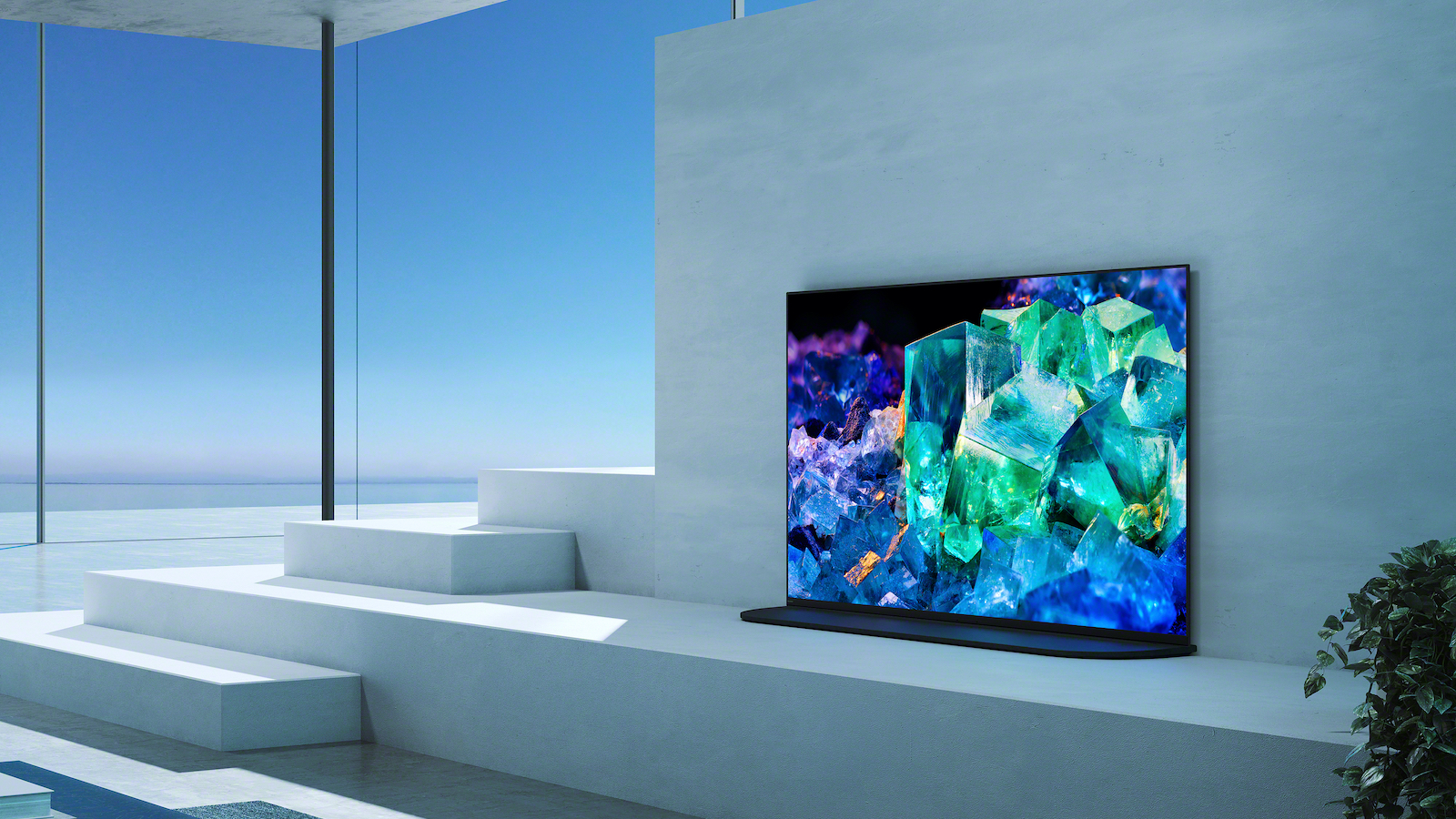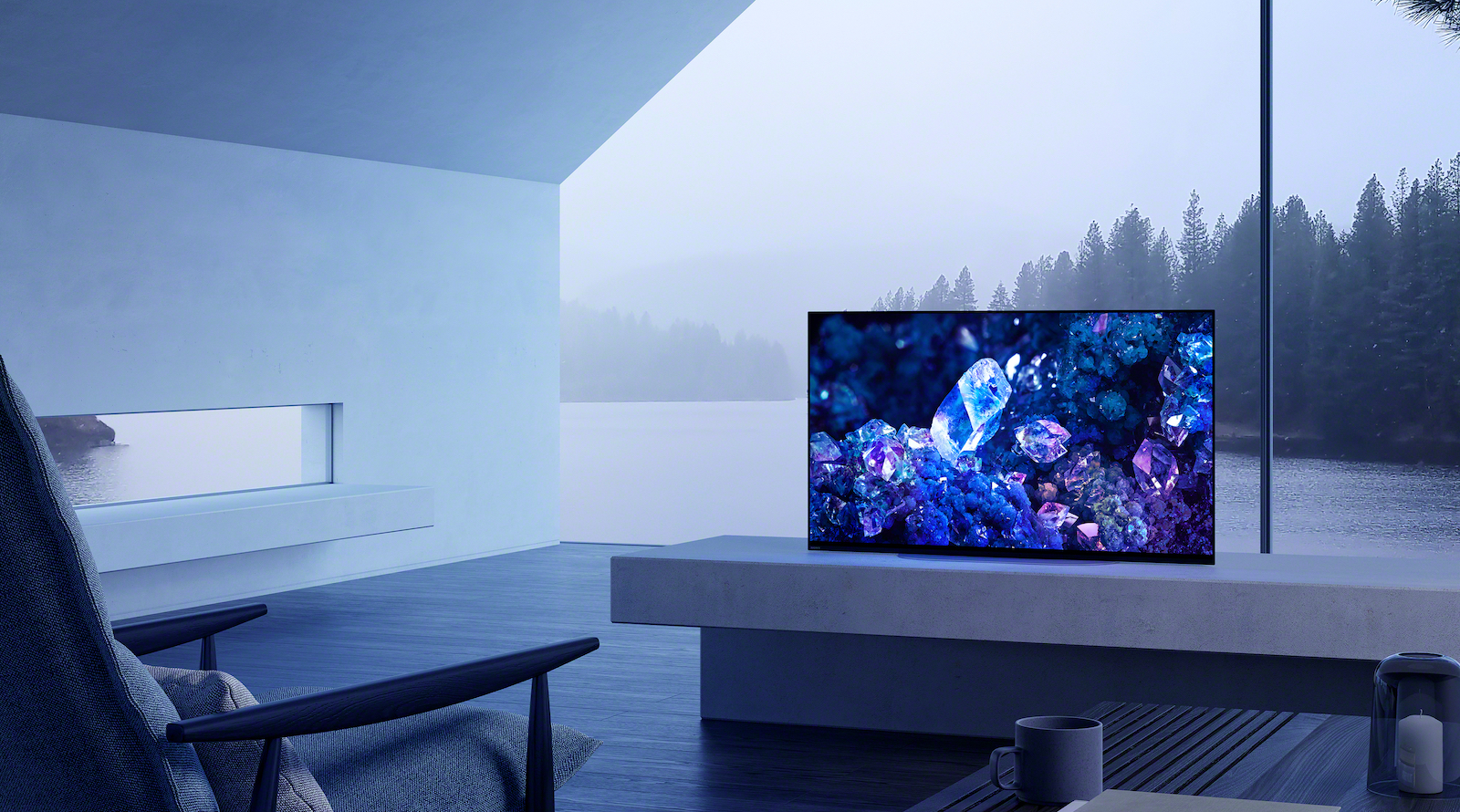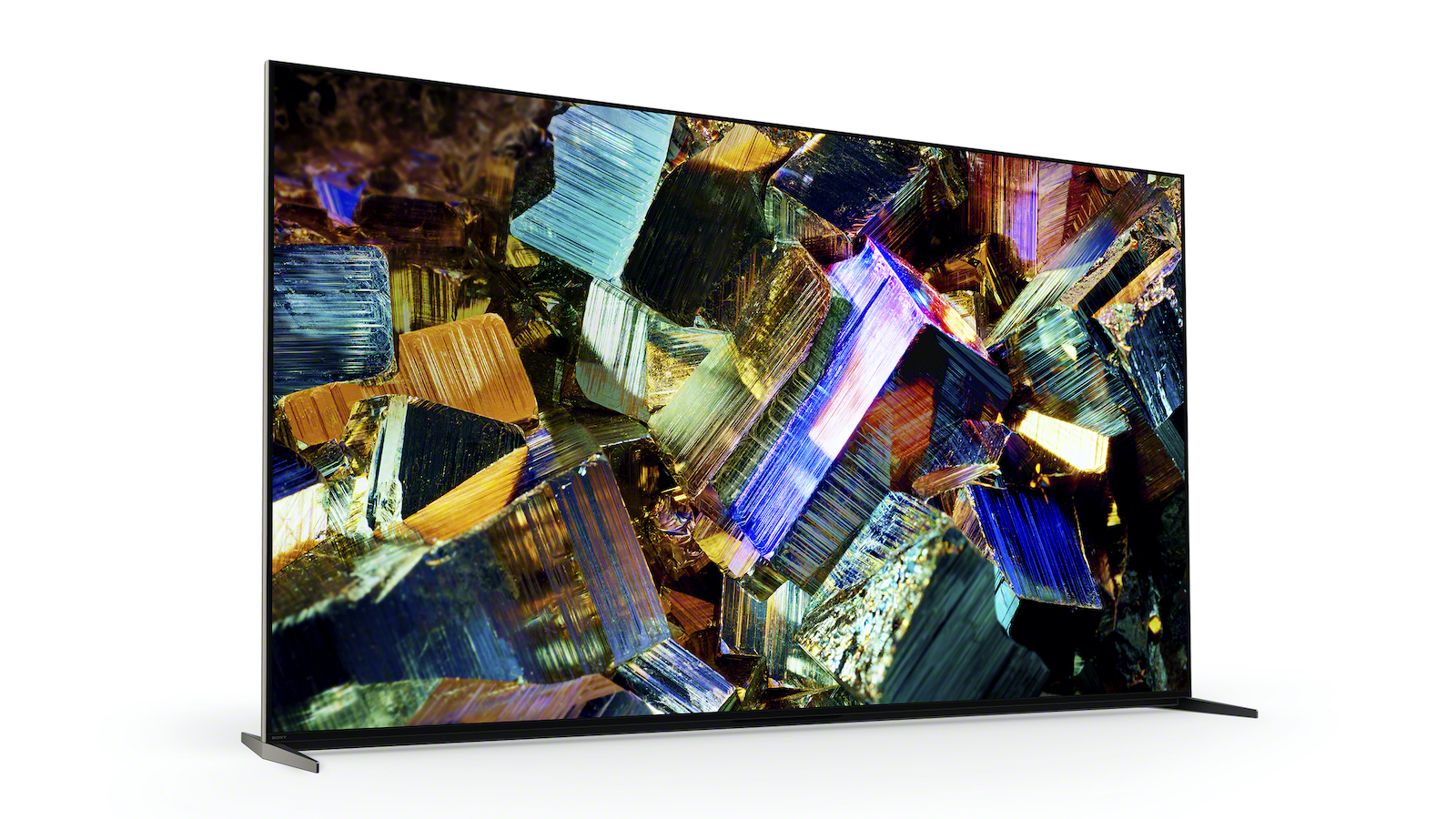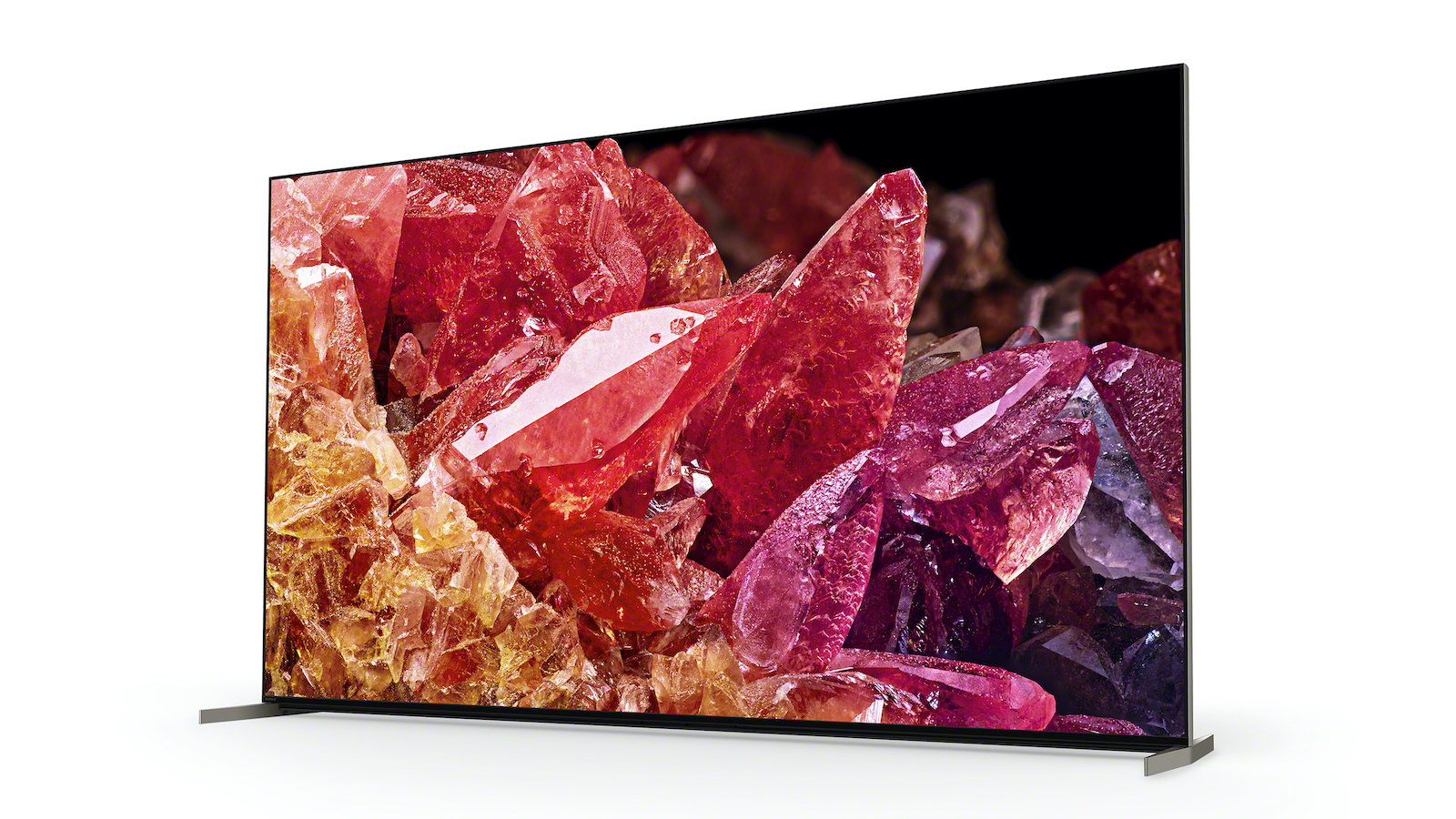Sony announces 2022 TV range, including Master Series A95K QD-OLED model
Plus 8K, Mini LED, standard OLED and LCD models

Sony has just taken the covers off its 2022 TV range at CES, and the big news is that it features a QD-OLED model.
The Master Series A95K replaces last year's awesome A90J model at the top of Sony's 4K TV range. It's also the first QD-OLED TV to be officially unveiled, with Samsung's own model having been leaked but not actually announced.
QD-OLED works by combining self-emissive OLEDs with Quantum Dots, theoretically combining the perfect blacks and impeccable contrast of the former with the vibrancy and brightness of the latter. This new TV technology has been pioneered by Samsung Display, which manufactures the panels for this Sony A95K and the almost-official Samsung model.
Of course, the panel is only part of the picture performance puzzle, and Sony has some tricks up its sleeve in order to squeeze the maximum out of the QD-OLED display, including a heat diffusion sheet that apparently makes heat distribution uniform, and the company's XR processor, which proved last year to be capable of exceptional feats.
Improvements to the XR processor this year include 'Depth Control', which is designed to improve the three-dimensionality of images, and 'Flexible Colour Contrast Control', which can intelligently increase the vibrancy of colours.
Interestingly, as well as being brighter and having greater colour vibrancy (particularly in the brightest parts of the picture) than a standard OLED TV, Sony says that its A95K QD-OLED also boasts even better viewing angles.
The A95K predictably features Acoustic Surface Audio+, which combines two subwoofers with two actuators that vibrate the entire screen in order to create sound. The actuators are larger than those of the outgoing A90J and are optimised for the new QD-OLED panel.
Get the What Hi-Fi? Newsletter
The latest hi-fi, home cinema and tech news, reviews, buying advice and deals, direct to your inbox.
Interestingly, the A95K also comes with Bravia Cam, a small video camera that magnetically attaches to the top edge of the TV to enable video chat and, at a later date, features such as gesture control and automatic optimisation of sound based on where you're sitting in relation to the TV.
If you'd prefer to operate the TV the old fashioned way, it also comes with a new remote that is 36 per cent smaller than the one it replaces, with a stripped-back button selection. The backlighting remains and there's a new 'Finder' function that involves the remote emitting a noise when you say 'ok Google, find my remote' to the TV.
As you'd expect, the somewhat controversial 'Perfect for PS5' program continues, so the A95K features Auto HDR Tone Mapping and Auto Genre Picture Mode for use with the PS5. Thankfully, standard ALLM (Auto Low Latency Mode) and VRR (Variable Refresh Rate) are also supported out of the box – no waiting for a firmware update that may never arrive (though Sony does insist that the VRR update for 2021 models definitely is still on the way).

The A95K is only available in 65-inch and 55-inch sizes, but Sony does have a solution for those people looking for a smaller OLED TV in the form of the A90K, which comes in 42-inch and 48-inch versions.
This is a standard OLED model rather than a QD-OLED, but it otherwise boasts many of the same features as the A95K, including the XR Cognitive Processor, Acoustic Surface Audio+ and support for advanced gaming features such as 4K/120, VRR and ALLM. Sony seems to be pitching this one fairly heavily at gamers, even going so far as giving it an optional raised stand position that apparently works well on a desk.
Below the A95K and A90K is the A80K OLED, which replaces the Award-winning A80J. This model will be available in 77-inch, 65-inch and 55-inch sizes and is again a standard OLED rather than a QD-OLED. It apparently boasts better contrast than its predecessor, thanks to the new XR OLED Contrast Pro feature, and the XR processor also improves colour reproduction. It has a more advanced sound system, too, with an extra actuator that takes the total to three and apparently improves vocal positioning.

Sony's 2022 LCD TV range is headed by the Master Series Z9K, which replaces the Z9J as Sony's only 8K model. The big news here is the shift to Mini LED backlighting, which Sony says results in far better contrast and higher peak brightness, plus reduced blooming.
Sony also claims that its adoption of Mini LED is better than that of rivals thanks to its XR Backlight Master Drive technology, which allows bright objects to shine without creating blooming or making the shape of the Mini LED structure visible beneath the panel. The company claims that its rivals seem to simply reduce the brightness of highlights in order to reduce blooming, and that is something we've spotted with Samsung's 2021 Neo QLED models.
The Z9K also obviously sports the XR Cognitive Processor and supports all of the same gaming features as its OLED siblings. It obviously doesn't support Acoustic Surface Audio, as a backlit panel can't be vibrated in the way that an OLED panel can, but it does have an 85W sound system that consists of two subwoofers, two midrange drivers and four strategically placed tweeters.
The Z9K will be available in 75-inch and 85-inch sizes.

Sitting below the Z9K is the X95K, a rather handsome 4K model that also boasts a Mini LED backlight and Sony's XR Backlight Master Drive technology.
Below that are a number of standard LCD/LED models, including the mid-range X90K (which replaces the excellent X90J), and the more affordable X85K and X80K, both of which are available in a wide variety of sizes.
MORE:
Check out all of the news from CES 2022
Samsung's own QD-OLED TV has leaked ahead of its official unveiling
Here's everything you need to know about QD-OLED
These are the best TVs you can currently buy
Tom Parsons has been writing about TV, AV and hi-fi products (not to mention plenty of other 'gadgets' and even cars) for over 15 years. He began his career as What Hi-Fi?'s Staff Writer and is now the TV and AV Editor. In between, he worked as Reviews Editor and then Deputy Editor at Stuff, and over the years has had his work featured in publications such as T3, The Telegraph and Louder. He's also appeared on BBC News, BBC World Service, BBC Radio 4 and Sky Swipe. In his spare time Tom is a runner and gamer.

